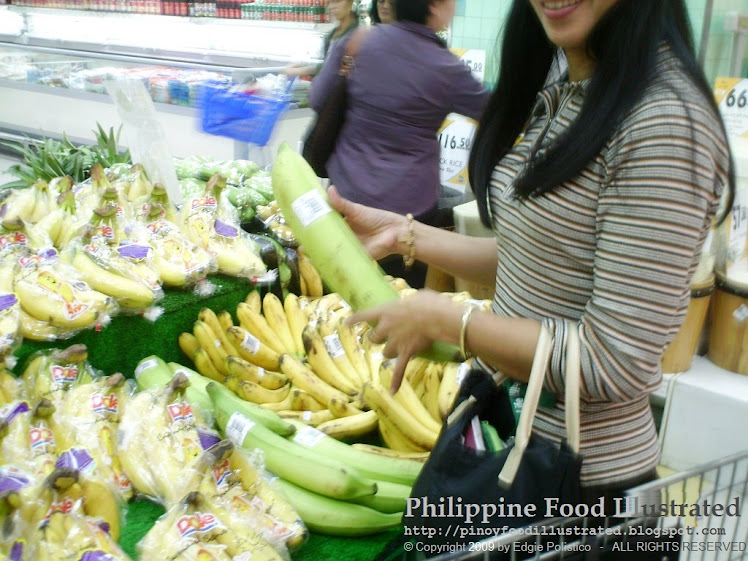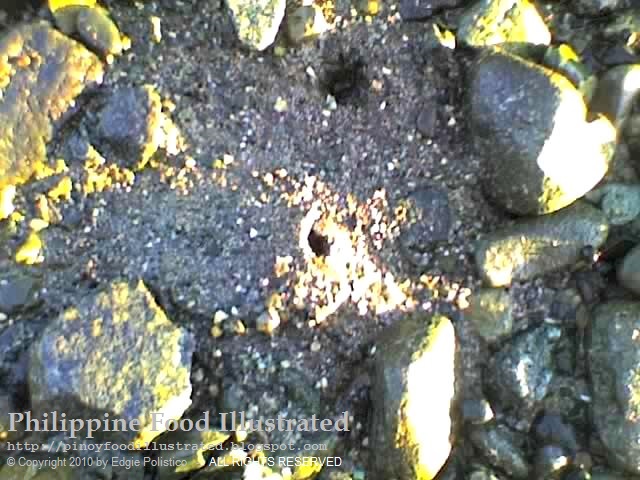
taguto – /ta-gû-tô/ Binul-anon-Leyteño [western Leyte] and Cebuano dish) [n.] sautéed minced chicken and chilies.
A fiery hot sautéed minced chicken and chilies.
A native chicken is preferred when making taguto.
A native chicken is slaughtered by cutting its throat, the blood is set aside, then dressed, gutted, washed clean, and the whole chicken is minced including the head, bones, and feet.
The chicken is dressed. It is done by dipping briefly the slaughtered chicken in scalding hot water then the feathers are pulled off.
The dressed chicken is cleaned thoroughly
All the internal organs are washed clean and chopped into pieces, including the gizzard and intestine which are cleaned of their contents. The minced meat and chopped internal organs are sautéed with chopped garlic and red onion.
Internal organs are washed clean and nothing is spared
The whole chicken is minced including the head, bones, and feet
The siling kulikot (bird’s eye chili) is equivalent to the amount of chicken meat.
Adding finely chopped and pounded ginger is optional. Adding some sliced and pounded ginger, would spike the piquancy more that it would virtually burn your lips, throat, and stomach.
The liver and gizzard are chopped into small pieces.
The complete set of ingredients for taguto.
The finely chopped siling kulikot (bird’s eye chili) is added in quantity equivalent to the amount of chopped chicken meat. Thus, if the minced chicken measures 1 liter, one liter of minced chilies is used.

The minced chicken is added in the sauté.

The dish is seasoned with soy sauce and/or salt to suit one's taste.
The chicken blood is added then seasoned with soy sauce and/or salt to suit the taste and then stirred continuously on medium fire until cooked.

The liver and blood are added towards the end of cooking to keep them tender and from getting overcooked.

The chopped gizzard is included
Taguto is often served as sumsuman (hors d'oeuvre) in drinking sessions and is extremely fiery hot.
So called taguto because the tiny pieces of bones would crack little sounds and the usual reaction of the eater is to cluck through one’s teeth known as taguto in Cebuano.
This enormous amount of siling kulikot makes the pulutan last long and for everyone to go slowly in devouring the dish. For sure, everyone will have a fair share of protein and will surely swig his tagay every after bite.

The piquancy (chili heat) of taguto is so intense it would virtually burn your lips, throat, and stomach, the sensation that would initiate you to warm your body and stay awake in the cold night or rainy day.
Taguto is considered a body warmer. It will keep you warm in the cold of the night and on rainy days. Usually taken as pulutan with the bahalina (aged coconut wine) when having a night swimming picnic at the beach.
Sorry if this makes you think "na para bagang ayaw ipakain at pinagdamutan ang gustong mamulutan." It seems, but you are wrong. We acquired the taste, and we love it. Of course, when you got the taste, you will surely love it too.
Watch the TAGUTO of Inopacan, Leyte featured in GMA7 episode of Kapuso Mo Jessica Soho (KMJS). Published in Youtube on Jun 19, 2017.This was made possible through the food research of Edgie Polistico and the people of Inopacan.
Now you have reason to forget the Bicol express of Bicolandia and the palapa of Lanao as the hottest dishes in the country. Here comes the TAGUTO of Leyte
There is this later variation of taguto that uses tuno (coconut milk) which causes the milder effect of chilies. Instead of using all the bones when mincing the chicken, only the soft bones of the breast part and neck are included, and more often the intestine is excluded being it is a very tedious process to clean the chicken bowels. This version of taguto is a bit soupy and is alternatively called as the halang-halang manok tinunoan (spicy hot chicken in coconut milk).
All photos by Edgie Polistico are copyrighted. ALL RIGHTS RESERVED.
Related posts:
Siling labuyo


For more about Filipino food, see this Philippine Food, Cooking, and Dining Dictionary. It is OPEN and FREE.
















+watermarked.jpg)
+watermarked.jpg)
watermarked.jpg)




